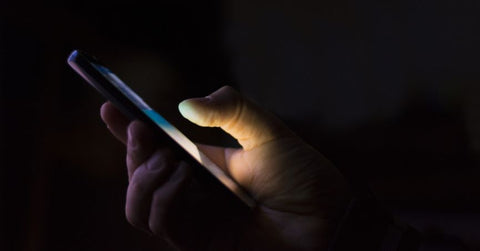5G is coming - here's everything you need to know

Telecommunications companies worldwide are racing to launch faster Internet service and better connectivity through 5G technology. Fortune reported that 5G is expected to be at least 10 to 100 times faster than the existing 4G service. With this bandwidth, 5G can connect and support 100 billion wireless devices and deliver ultra-fast download speeds of up to 10 GB per second.
Related: WHAT CELL PHONE COMPANIES AREN'T TELLING YOU. FACTS REVEALED
While many tech users and experts are looking forward to the looming 5G rollout, not everyone is enthusiastic about it, especially with the health risks rumored to be associated with the service.
What’s “wrong” with 5G?
5G will tap the millimeter-wave (MMW), which is around 30 - 300 GHz in bandwidth. The problem with MMWs is that they are prone to interference from buildings, plants, and the rain.
In addition, these waves cannot travel far due to their short wavelengths. As a result, telecommunication companies would need to install thousands of short-distance, mini cell towers to support and reinforce 5G technology.
According to CBS News, wireless companies in the United States are looking to mount at least 300,000 antennas, which is equivalent to the total number of towers that have been put up in the last 30 years.
We would see wireless antennas everywhere – from lamp posts to utility poles and in nearly every space in your neighborhood and business complexes, thus increasing our exposure to the harmful radiofrequency radiation.
Also Read: CELL PHONE RADIATION DESTROYS SPERM, STUDIES SAY
While previous studies have shown correlations of absorption of radio frequency energies from the 4G network with tumor growth and cancer in rats, the potential health risks of the 5G service have not yet been fully established.
“5G’s millimeter-waves were never tested for human health hazard and there is only a very limited number of studies on its biological effects. In practice, we do not know what the health effects of long-term and close proximity exposures might be,” said Professor Dariusz Leszczynski, one of the leading researchers on the effects of RF radiation.
Despite this, several studies link MMWs with skin diseases and the bandwidth that the 5G network will use with retinal differentiation, arrhythmias, and effects on the immune system.

For instance, in his open letter to the Federal Communications Commission, Dr. Yael Stein from the Hebrew University of Jerusalem mentions investigating the absorption of MMWs by the skin. He found out that the skin’s sweat ducts are conductive receptors to MMWs, causing them to be readily absorbed by the skin. This can lead to physical pain and a possible increase in one’s risk of developing cancer.
A study conducted by the Medical Research Institute of Kanazawa Medical University revealed that a 60 GHz bandwidth, which is the same as 5G technology, can penetrate below the eye’s surface. Research by the College of Physicians and Surgeons in Pakistan proved this by showing that EMFs caused retinal differentiation in chicken embryos.
Related: Concerns rise over potential adverse health effects of 5G technology
How can you protect yourself?
While years of research and millions of funding are needed to clearly establish the effects of 5G service in humans, there are various ways you can curb the harmful effects of RF radiation, whether it’s 4G or 5G.

One can minimize exposure to RF radiation by limiting your phone time and using cases and sleeves that block such radiation. SafeSleeve offers anti-radiation cases for your wireless devices.
They’re designed to block up to 99% of RF radiation and protect your phone from cracking, dinging, and scratching with high impact resistant, Military-Grade (Mil-Std 810G) cases, developed with your comfort in mind.

